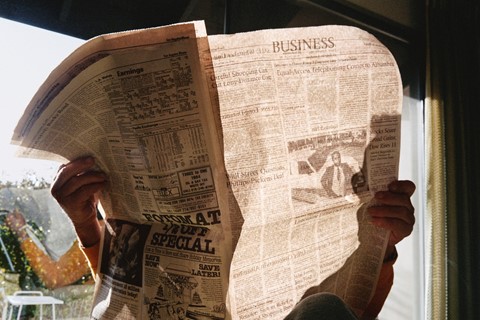As the American photographer's seminal book is republished, Billie Muraben speaks to his wife about the unique and appealing rawness of the publication
Larry Sultan’s Pictures from Home was first published in 1992, the culmination of a decade-or-so of travelling up and down California’s coastline, with the intention of creating a portrait of his father. “Unaware of deeper impulses, I convinced myself that I wanted to show what happened when, as I interpreted my father’s fate, corporations discard their no-longer-young employees, and how the resulting frustrations and feelings of powerlessness find their way into family relations,” Sultan wrote, early in the first chapter of the book. “These were the Reagan years, when the image and the institution of the family were being used as an inspirational symbol by resurgent conservatives. I wanted to puncture this mythology of the family and to show what happens when we are driven by images of success. And I was willing to use my family to prove a point.”
Pictures from Home was released to great critical acclaim, and quickly sold out, available thereafter only for a vastly escalataed price. Sultan passed away in 2009. So it is that now, 25 years later and just in time for the photographer's retrospective (taking place first at Los Angeles Country Museum of Art, and then at San Francisco Museum of Modern Art) his wife Kelly Sultan teamed up with publisher Michael Mack and designer Lewis Chaplin to publish a long-awaited second edition. One “that holds sacred the sequencing and the relationship between text and image that Larry chose,” says Kelly.
“What I appreciated about the second edition was Lewis Chaplin and Michael Mack’s uncompromised commitment to Larry’s original intentions for the book. Their commitment to opening the images up to their full intended frame, making it more available and explicit,” she continues. “Another thing that is critical about Pictures from Home, that I was nervous about approaching, was finding a way to republish that would respect the rawness of the project. Larry wasn’t sure about what he was doing when he was doing it, but he did it anyway; and that uncertainty, that confusion allowed the reader to feel that rawness. It allows you to explore, simultaneously, what he is exploring. To have refined it, or resolved it, would have been a disservice to how Larry felt when he did the book, and the way he approached picture-making.”

Publisher Michael Mack was deeply aware of the potential pitfalls of the project. “We worked hard to establish, or maintain, what we could see was his vision [in the first edition], and the relationship between each voice; the thought processes and chronologies, and just pick them apart,” he says. “The challenge was, in the absence of the author, to attempt to improve it without his input, which is a treacherous line to walk. It was important to maintain the authority of his voice in the photographs and in the text, which is so brilliant. The way he speaks is incredible, every word is there. It’s not wasted.”

The book's chapters are interspersed with stills from home movies, which go some way to representing Sultan's parents' own self image, Kelly says. “Larry considered his immunity as a maker, and the betrayal inherent to portraiture. He felt conflicted about taking part in that without offering his parents the power and responsibility of sharing their side of the story. In Pictures from Home they are more than simply subjects.” The roles played and projected in the book are immensely complex, he continues. “When his father says, ‘But it’s not me? You’re projecting on me what you want me to be’ – and it’s completely the other way round as well, the father is completely projecting too – that’s how parenting works! It’s reversed, and that’s the genius of the project. While it appears to be so linear and specifically about his relationship to his parents, and that particular period in American history – the rise of capitalism and the American Dream – the reality is it’s a pretty universal experience.”

There’s something in the way Larry Sultan tells a story of such a specific time and place, yet manages to cut through it, “taking the ordinary and making it sublime”, as Kelly says. “And the more specific and idiosyncratic you got, the more people could recognise something that was a larger truth.”
“You don’t need to create a fiction to create mystery,” she continues. “Mysteries are elusive because they are so embedded in your daily life, and that’s what Larry was interested in. He hoped that by focusing on daily life, he would capture something mysterious that was just out of view. When you slow life down, and look in between those big events that you think to capture, you see the stuff that people live every day, and that’s what really hits home. That’s what is poignant, and mysterious, and a challenge. If he looked for that mysterious thing he’d never find it, but if he just kept focusing on what was interesting to him, it would appear. And that’s what happened with Pictures from Home.”

Towards the end of the book, when Sultan’s photo-series comes to a close, it is followed by a series of fuzzy Super-8 stills from home movies, a decision made, as Kelly Sultan remarked to Mack, “because the fact is, he didn’t want it to drop off the edge of a cliff”. Michael says of the decision, “There’s not a terminal moment in the book, where it’s over. Pictures from Home has a more open-ended notion of memory, and the fact you continue to exist in ways other than physical. That’s an indication of Larry Sultan’s process, and how clearly he intended it to work in a very particular way, rather than it ending with just a full stop.”
Larry Sultan: Pictures from Home, published by MACK, is available now.






